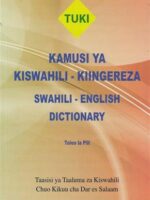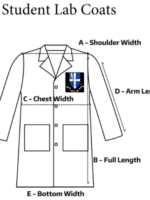-
Tuki Swahili-English Dictionary
Product details
- Publisher : Taasisi ya Uchunguzi wa Kiswahili, Chuo Kikuu cha Dar es Salaam; Toleo la 1 edition (January 1, 2001)
- Language : English
- Hardcover : 372 pages
- ISBN-10 : 9976911440
- ISBN-13 : 9789976911442
- Item Weight : 14.4 ounces
- Best Sellers Rank: #2,306,014 in Books (See Top 100 in Books)
- #5,163 in Foreign Dictionaries & Thesauruses
-
White Lab Coat (with badge)
PLEASE INDICATE THE MEASUREMENTS IN SPECIAL NOTES SECTION UPON CHECKOUT
Shop By Categories
- International Curriculum
- Marketplace – Used Books!
- National Curriculum
- TVET/Higher Learning
- Lab Equipment
- General Books
- International Curriculum
- Marketplace – Used Books!
- National Curriculum
- TVET/Higher Learning
- Lab Equipment
- General Books


